Table of Contents
HISTORY
Cultism and human rituals have a long and complex history in Asia, dating back thousands of years. Cultism is worshipping a deity or person, often with a strong devotion or commitment to the beliefs and practices associated with that individual or group. On the other hand, human rituals involve sacrificing or offering human life, either as a form of worship or for other purposes.
Various forms of cultism and human rituals were prevalent in ancient Asia, ranging from worshipping deities like Shiva and Kali in India to ancestor worship in China and Japan. These practices were often intertwined with political power and social status, with rulers and elites using religious ceremonies and human sacrifices to legitimize their authority and control over their subjects.
Over time, many of these practices have evolved or been suppressed as societies have become more secular and rationalistic. However, some forms of cultism and human rituals continue to exist in certain parts of Asia, often in underground or secretive groups operating outside mainstream society.
It is important to note that such practices are illegal and morally reprehensible and should not be encouraged or condoned in any way. The value of human life must always be upheld and protected, and any form of violence or harm to others must be rejected unequivocally.
INTRODUCTION:
Asia, the world’s largest and most diverse continent, has been a cradle for developing and increasing numerous religious and spiritual beliefs throughout history. This rich tapestry of cultures, cultism, and human rituals has left an indelible mark on the region’s religious landscape. Often shrouded in mystery and controversy, these practices have evolved over millennia, encompassing various beliefs, ceremonies, and sacrifices. Exploring the history of cultism and human rituals in Asia unveils a complex narrative that intertwines religious fervour, socio-political dynamics, and the quest for transcendence.
The roots of cultism and human rituals in Asia can be traced back to ancient civilizations, where many beliefs and practices flourished. One prominent aspect was the worship of various deities, revered as the embodiment of natural forces or cosmic powers. In India, for example, worshipping deities such as Shiva and Kali involved elaborate rituals, ecstatic dances, and even sacrificial offerings, reflecting a profound devotion to the divine.
Another significant aspect of Asian cultism emerged through ancestor worship, particularly in China and Japan. The veneration of ancestors played a crucial role in these societies, as it was believed that deceased family members retained the power to influence the lives of their descendants. Elaborate rituals and offerings were performed to honour and appease the spirits of ancestors, ensuring their blessings and protection.
However, as history unfolded, cultism and human rituals in Asia began to intersect with political power and social structures. Rulers and elites strategically employed religious ceremonies and sacrifices to consolidate their authority and assert control over their subjects. These acts of devotion and sacrifice often acquired a political dimension, with monarchs capitalizing on the spiritual beliefs of their people to legitimize their rule and strengthen social cohesion.
One notable example is the cult of the emperor in ancient China. Emperors were revered as divine figures, and their authority was reinforced through religious rituals that emphasized their sacred status. Human sacrifices were sometimes offered to appease the gods and ensure the prosperity and stability of the empire.
In certain regions of Asia, cultism took a darker turn, delving into macabre practices involving human sacrifices. For instance, the ancient Khmer civilization in present-day Cambodia witnessed rituals where individuals, often prisoners or captives from conquered lands, were sacrificed to appease deities and ensure the kingdom’s prosperity.
The arrival of major religious movements in Asia brought about significant shifts in cultism and human rituals. The spread of Buddhism, for instance, emphasized non-violence and compassion, leading to a gradual decline in sacrificial practices. Similarly, the rise of Islam, particularly in regions like Central Asia and the Indian subcontinent, transformed the religious landscape and redirected the focus away from human rituals towards prayer, charity, and personal holiness.
In recent history, Asia has witnessed the resurgence of cult-like movements that blend religious elements with charismatic leadership and unorthodox practices. These modern cults often attract followers who seek spiritual fulfillment, personal transformation, or a sense of belonging in an increasingly fragmented society. The motivations behind these movements vary widely, from pursuing alternative spiritual experiences to escaping societal pressures.
It is essential to note that while cultism and human rituals have left an indelible mark on the history of Asia, these practices have frequently faced opposition and condemnation from mainstream society and religious authorities. Governments have enacted laws to prohibit harmful and exploitative practices, safeguarding the rights and well-being of individuals.
Ancient Cults and Ritualistic Traditions:

Ancient cults and ritualistic traditions were integral to many civilizations throughout history. These practices encompassed various beliefs and ceremonies, often centered around worshipping deities, spirits, or ancestral figures. They significantly shaped religious and social dynamics, offering a sense of meaning, identity, and connection to the divine.
In ancient Egypt, for example, cults emerged around specific gods and goddesses, such as Osiris, Isis, and Ra. These cults involved elaborate rituals, offerings, and festivals dedicated to honoring and appeasing the deities. The worship of these gods was deeply intertwined with Egyptian society’s social and political fabric, with pharaohs often assuming the role of high priests and claiming divine status.
In ancient Greece, cults played a crucial role in religious life. The most famous example is the cult of the Olympian gods, such as Zeus, Hera, Athena, and Apollo. Worshipers would participate in public ceremonies, including animal sacrifices, processions, and games, held at temples and sacred sites. Mystery cults, like the Palestinian Mysteries, offered initiatory experiences and promised spiritual enlightenment and salvation to their followers.
Similarly, in ancient Rome, cults and rituals were essential to religious practice. The Romans adopted and assimilated various cults from conquered territories, creating a rich tapestry of beliefs. The Imperial Cult was particularly significant, with the emperor being revered as a deity and worshipped in public ceremonies. Additionally, mystery cults like the Cult of Mithra gained popularity among soldiers and elites, offering initiation rites and promises of an afterlife.
In ancient Mesopotamia, the cradle of civilization, cults centred around worshipping gods and goddesses like Enliven, Inane, and Marduk. These cults involved temples, statues, and sacred rituals, including offerings, prayers, and divination. The priests held significant influence, acting as intermediaries between the people and the divine.
The ancient Mayan civilization in Americanism had a complex religious system, with various cults and rituals dedicated to their pantheon of gods. These practices often involved bloodletting, human sacrifice, and sacred ceremonies in temples and pyramids. The Mayans believed that these rituals maintained cosmic order and ensured the well-being of their communities.
In Asia, cults and ritualistic traditions were prevalent across different cultures. The Vedas and Upanishads laid the foundation for Hindu rituals and worship in ancient India. Sacrifices, known as yajnas, were performed to appease deities and seek their blessings. Buddhism and Jainism also developed their distinctive ritual practices, emphasizing meditation, moral conduct, and the pursuit of enlightenment.
China and Japan had a rich history of ancestor worship, where filial piety and reverence for one’s lineage played a central role. Ancestral rites, offerings, and ceremonies were performed to honour deceased family members and seek their guidance and protection.
While ancient cults and ritualistic traditions varied in their specific practices and beliefs, they shared a common thread of seeking a connection with the divine, blessings, protection, and a deeper understanding of the cosmos. These practices were deeply ingrained in their respective civilizations’ social, cultural, and religious fabric, shaping the lives and beliefs of individuals and communities.
Prehistoric Shamanism and Ritualistic Beliefs:

Prehistoric shamanism and ritualistic beliefs refer to the spiritual practices and beliefs that existed in prehistoric societies before the advent of recorded history. These practices were rooted in animism, the belief that all natural objects and phenomena possess spiritual essence or souls.
Shamanism, a central aspect of prehistoric cultures, revolved around the figure of the shaman, a spiritual leader who served as a mediator between the human and spirit realms. Shamans were believed to possess special abilities to communicate with spirits, perform healing, and guide their communities.
Prehistoric shamans utilized techniques, including ecstatic trance states induced through drumming, chanting, dancing, or hallucinogenic plants. In these altered states of consciousness, they believed they could access spiritual realms, gain knowledge, and communicate with spirits to address community needs.
Ritualistic beliefs and practices were an integral part of prehistoric societies. These rituals were performed to ensure the well-being of the community, success in hunting or gathering, fertility of crops, and protection against perceived threats. They often involved offerings, sacrifices, ceremonies, and communal gatherings.
Cave paintings and rock art found in various prehistoric sites, such as Lascaux in France and Altamira in Spain, provide glimpses into the ritualistic beliefs of early humans. These artistic depictions often include images of animals, possibly representing a connection between humans and the animal spirits they sought to appease or emulate.
Prehistoric cultures often had rituals associated with burial practices, suggesting a belief in an afterlife or the continuation of the soul. Grave goods and ceremonial burials, including placing tools, weapons, and ornaments with the deceased, indicate a belief in an afterlife and provide resources for the journey beyond.
While the specific rituals and beliefs varied across different prehistoric cultures, there was a shared emphasis on the spiritual world, the interconnections of all beings, and the role of the shaman as a spiritual guide and healer.
Prehistoric shamanism and ritualistic beliefs laid the foundation for later spiritual and religious practices, influencing the development of animism, polytheism, and other belief systems that emerged as civilizations evolved. These ancient practices reflect humanity’s deep-seated desire to understand the natural world’s mysteries, forge a connection with the spiritual realm, and seek guidance and protection in the face of the unknown.
The Influence of Ancient Mesopotamian and Indus Valley Civilizations:
The ancient civilizations of Mesopotamia and the Indus Valley significantly influenced the development of human history, particularly in the realms of culture, politics, and religion.
Mesopotamia, located in the fertile lands between the Tigris and Euphrates rivers, gave rise to some of the earliest known urban societies. Summer, Akkad, Babylon, and Assyria were prominent Mesopotamian civilizations. They developed advanced systems of writing, governance, and law. The Code of Hammurabi, a legal code from ancient Babylon, exemplifies the early codification of laws and regulations.
In the realm of religion, Mesopotamia was home to a rich pantheon of gods and goddesses. Their religious beliefs were deeply rooted in polytheism, with deities representing various aspects of nature, such as Enlil (god of wind) and Inanna (goddess of love and war). The Mesopotamians constructed magnificent ziggurats as religious centres and performed elaborate rituals, including animal sacrifices, to appease their gods.
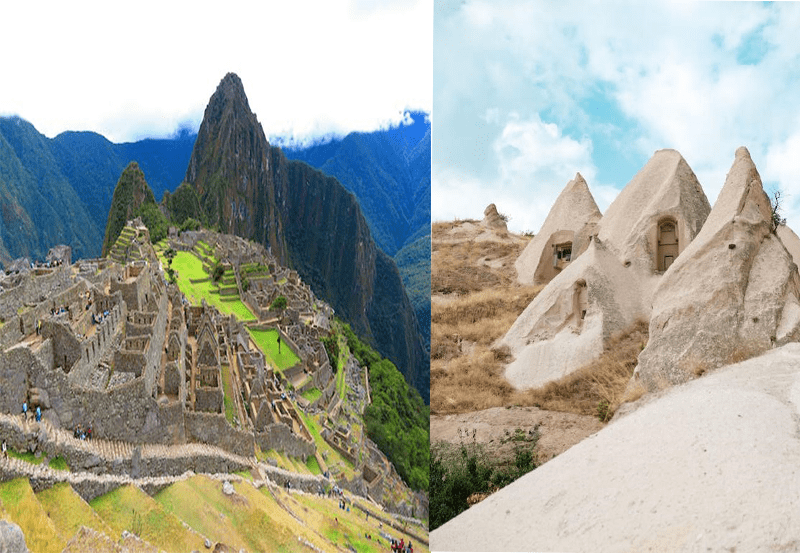
The Indus Valley Civilization, situated in the northwest region of the Indian subcontinent, flourished from approximately 2600 BCE to 1900 BCE. It was characterised by well-planned cities, advanced drainage systems, and standardized weights and measures. The Indus Valley people traded with other regions, including Mesopotamia, showcasing their economic and cultural connections.
The Indus Valley Civilization also demonstrated remarkable advancements in urban planning and sanitation. The cities, such as Mohegan-Dora and Harappa, featured grid-like street layouts, multi-story buildings, and sophisticated drainage systems. The meticulous urban planning and efficient water management systems indicate a highly organized society.
The religious practices of the Indus Valley people still need to be fully understood due to the lack of deciphered texts. However, archaeological evidence reveals the presence of ritualistic practices and reverence for deities. The discovery of seals depicting figures in yogic postures suggests the existence of spiritual or religious traditions. The prominence of water-related symbols, like the “Great Bath” in Mohegan-Dora, suggests a connection to purification rituals or water-centrism beliefs.
Both Mesopotamian and Indus Valley civilizations significantly contributed to developing writing systems. The cuneiform script of Mesopotamia, considered one of the earliest forms of writing, influenced later writing systems in the region. The script used wedge-shaped impressions on clay tablets to record administrative, economic, and religious information.
The Indus Valley Civilization had its writing system known as the Indus script. Despite extensive efforts, the script has yet to be fully deciphered, limiting our understanding of the civilization’s written records. However, the presence of the script on various artifacts suggests a well-developed system of communication and administration.
In summary, the ancient civilizations of Mesopotamia and the Indus Valley left lasting legacies in culture, politics, and religion. Their advancements in urban planning, writing systems, legal codes, and religious practices set the stage for future civilizations and continue to fascinate and influence our understanding of the ancient world.
Blood Sacrifices and Ritualistic Practices in Early Asian Cultures
Blood sacrifices and ritualistic practices played significant roles in the religious and cultural beliefs of various early Asian cultures. These practices were deeply rooted in the understanding that offerings, including the sacrifice of animals or, in some cases, humans, could appease deities, ensure fertility, seek protection, or bring about prosperity.
In ancient India, blood sacrifices, known as yajnas or yagnas, were essential to religious rituals. Vedic texts described elaborate ceremonies in which animals, such as horses or cows, were ritually slaughtered as offerings to gods. These sacrifices were performed by skilled priests known as Brahmin s, who followed precise rituals and recited sacred chants.
Similarly, in ancient China, blood sacrifices were vital to religious practices. The Chinese believed the spiritual world influenced the earthly realm, and sacrifices were offered to honour ancestors, gods, and spirits. The rituals involved killing animals, including pigs, cattle, and birds, to nourish and appease the deities, seeking blessings for the living and deceased.
In ancient Japan, blood sacrifices were known as “Hiroshima” or “human pillars.” This practice involved burying individuals, often prisoners of war or enslaved people, within the foundation of important structures, such as castles or bridges. The sacrifice was believed to appease the gods and protect the structure from natural disasters or enemy attacks.
The Khmer Empire in ancient Cambodia also practised blood sacrifices, particularly during the construction of their grand temples, most notably Angkor Watt. Captives and prisoners of war were sacrificed in large-scale ceremonies to ensure the favour of deities and spiritual guardians, believing their life force and blood would fortify the temple’s spiritual power.
It is important to note that while blood sacrifices and ritualistic practices were significant in early Asian cultures, they gradually declined or transformed as religious beliefs evolved. Influences from other religions, such as Buddhism, Jainism, and Confucianism, promoted non-violence and emphasized alternative forms of worship and spiritual development.
As societies progressed, many ancient rituals involving blood sacrifices gradually gave way to symbolic offerings or other acts of devotion, shifting the focus toward prayer, meditation, and ethical conduct. Today, blood sacrifices and such extreme practices are generally considered archaic and are not part of mainstream religious practices in Asia.
Blood sacrifices and ritualistic practices held important roles in the religious and cultural traditions of early Asian civilizations. These practices reflected the beliefs and understanding of the time, aiming to establish a connection with the divine, seek blessings, and ensure the well-being of individuals and communities. However, with time and the evolution of religious thought, many of these practices have diminished or transformed into more symbolic and contemplative forms of worship.
The Rise of Sects and Cults in Asian History:
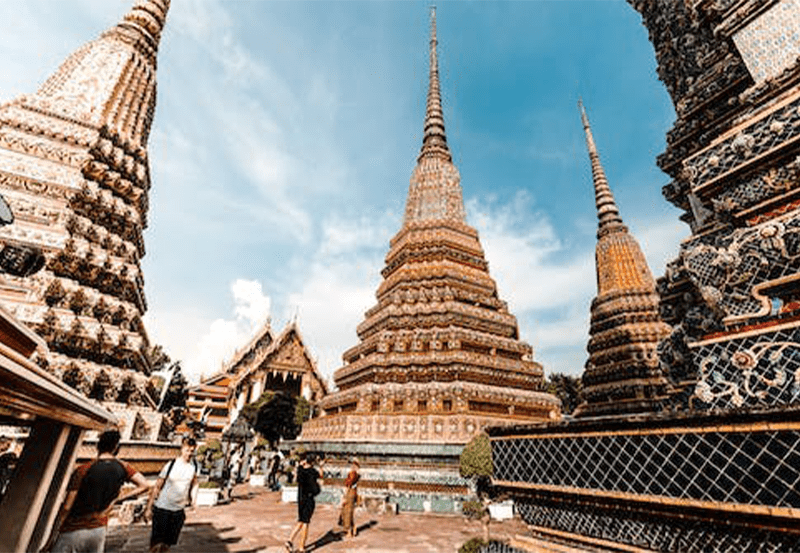
The rise of sects and cults in Asian history has been a complex and varied phenomenon, reflecting the diverse religious landscape of the continent. Sects and cults emerged as alternative or distinct religious movements within existing religious traditions, often offering new interpretations, practices, or spiritual experiences.
In ancient India, sects and cults emerged within Hinduism, challenging the orthodox Brahman traditions. The Bhakti movement, for example, emphasized devotion and personal connection to a chosen deity, transcending traditional caste boundaries. Bhakti saints like Kafir and Mirabeau inspired followers to pursue a more direct and emotional relationship with the divine.
In China, sects and cults played a significant role in the country’s religious history. Dadaism, originating from the philosophical teachings of Laozi, developed into various sects emphasizing immortality, alchemy, and the pursuit of spiritual insights. The White Lotus Society, a syncretist religious movement, emerged during the Yuan Dynasty and blended elements of Buddhism, Dadaism, and indigenous Chinese beliefs.
In Japan, the rise of sects and cults can be seen in the context of new religious movements. The Pure Land sect, founded by Hon-en and later popularized by Shin-ran, focused on devotion to the Buddha Amide and the belief in rebirth in the Pure Land. Another notable example is the sect of Nichiren, which emphasized the recitation of the Lotus Sutra as a means of attaining enlightenment.
During the colonial period, sects and cults in Asia underwent further transformation and expansion. In India, the Ar-ya Samar and Ramakrishna Mission emerged as reformist movements, seeking to reinterpret Hinduism and promote social and religious reforms. The Rad-ha Swami Sat-sang Bean, a modern spiritual sect, gained popularity for its emphasis on meditation and inner spiritual experiences.
In the 20th century, Asia witnessed the emergence of new religious and spiritual movements that can be classified as cults. A notable example is Am Shinrikyo, a Japanese cult that gained international attention for its terrorist activities in the 1990s. Am Shinrikyo blended elements of Buddhism, Hinduism, and other spiritual traditions with a doomsday prophecy and authoritarian leadership?
It is essential to note that while the term “cult” is often associated with negative connotations, not all sects and cults exhibit harmful or destructive behaviors. Many new religious movements offer alternative spiritual paths, communal support, and a sense of belonging to individuals seeking unique religious experiences or alternative belief systems.
In summary, the rise of sects and cults in Asian history reflects the dynamic nature of spiritual development and the human quest for spiritual fulfillment. These movements often emerged as alternatives to established religious traditions or new interpretations of existing beliefs, offering diverse pathways to connect with the divine or attain spiritual liberation. While some sects and cults have faced criticism or controversy, they continue to shape Asia’s religious and cultural landscape.
The Emergence of Mystery Cults and Secret Societies:

The emergence of mystery cults and secret societies has been a fascinating aspect of human history, spanning various civilizations and cultures. These clandestine groups offered participants a unique spiritual experience, initiation rituals, and a sense of exclusivity and belonging.
Mystery cults were religious organizations that emerged in ancient Greece and Rome, focusing on worshipping specific deities and providing a pathway to spiritual salvation or enlightenment. One of the most well-known mystery cults was the Palestinian Mysteries, dedicated to the goddess Demeter and her daughter Persephone. Initiation into these mysteries involved a series of secret rituals and ceremonies believed to grant participants insights into the afterlife and the promise of a blessed existence.
Another notable mystery cult was the cult of Mithra, which originated in Persia but gained popularity throughout the Roman Empire. The cult centered around the god Mithra and involved secretive initiation rites, symbolic rituals, and a hierarchy of ranks. Mithra worshipers believed in the deity’s power to grant immortality and salvation.
On the other hand, Secret societies were often secular organizations that focused on non-religious or political pursuits. These societies operated covertly, using secret codes, signs, and rituals to maintain exclusivity and protect their activities. One prominent example is the Freemasons, whose origins can be traced back to medieval stonemasons’ guilds. Freemasonry evolved into a speculative society, emphasizing moral and philosophical teachings, rituals, and mutual support among its members.

Secret societies have played significant roles in Asia in social and political spheres. For instance, the Triads in China and the Yakuza in Japan have been well-known organized crime syndicates for centuries. These secret societies have complex initiation rituals, codes of conduct, and hierarchies, providing their members a sense of identity and mutual protection.
The emergence of mystery cults and secret societies can be attributed to various factors, including the human desire for secrecy, exclusivity, and the search for deeper spiritual or philosophical meaning. These organizations often provided a sense of community, shared knowledge, and access to esoteric teachings or practices that were not readily available to the general public.
Over time, mystery cults and secret societies have evolved and transformed, adapting to the changing cultural and religious landscapes. Some have faded, while others continue to exist in modern forms, preserving ancient traditions or serving as social or fraternal organizations.
While the exact details of these groups’ rituals and practices may remain shrouded in secrecy, their influence on cultural, religious, and social development cannot be overlooked. The allure of mystery and the promise of hidden knowledge have captivated individuals throughout history, fueling the ongoing fascination with mystery cults and secret societies.
Notable Cults and Sects in Asian History (e.g., Thug-gee, Am Shinrikyo):
Several notable cults and sects have emerged in Asian history, leaving a significant impact on the region’s religious and social landscapes. Here are brief explanations of two such groups:
Thug-gee:
Thuggee was a secret cult operated in India from the 14th to the 19th century. The Thugs were notorious for their criminal activities, primarily robbing and killing travelers. They worshipped the Hindu goddess Kali and believed their violent acts were sacrifices in her honor. Thug-gee gained notoriety for the scale of their operations and the secrecy with which they operated. British efforts to suppress the cult intensified during colonial rule, eventually leading to its eradication.
Aum Shinrikyo:
Am Shinrikyo was a Japanese cult founded by Shook Asahara in 1984. The group blended elements of Buddhism, Hinduism, and other spiritual traditions with a doomsday prophecy and authoritarian leadership. Aum Shinrikyo gained international attention in 1995 when it carried out a sarin gas attack on the Tokyo subway system, killing 13 people and injuring thousands. The cult’s actions revealed its extremist and dangerous nature, leading to the arrest and conviction of its leaders. It has since undergone transformations and operates under different names.
It is important to note that while these cults gained infamy due to their criminal or extremist activities, they do not represent most religious or spiritual groups in Asia. Most religious organizations in the region promote peace, harmony, and ethical values, contributing positively to their communities cultural and social fabric.
Cultural Contexts and Belief Systems:
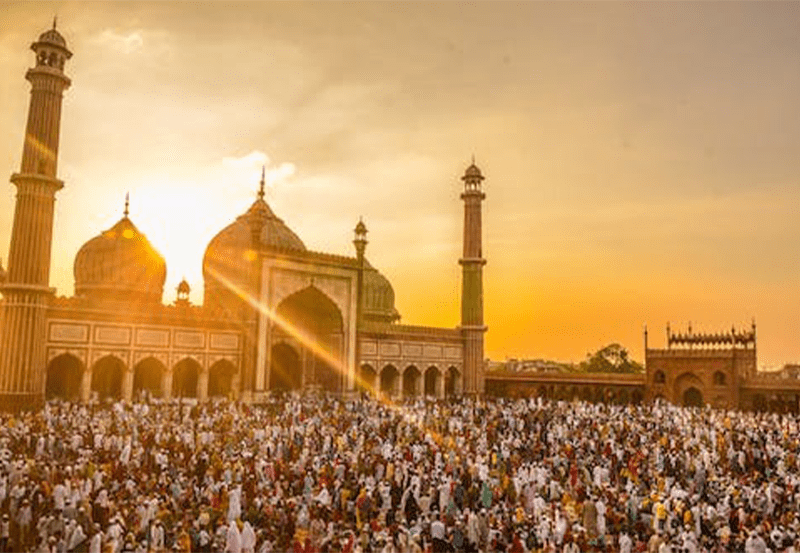
Cultural contexts and belief systems are closely intertwined and shape how individuals and communities understand and interpret the world around them. Belief systems, including religious, spiritual, and philosophical frameworks, provide a lens through which people perceive reality, make sense of their experiences, and establish values and norms within a specific cultural context.
Cultural context refers to the broader social, historical, and environmental factors that influence a particular group’s beliefs, practices, and worldview. It encompasses language, customs, traditions, social structures, historical events, and geographical factors. These contextual factors significantly impact the formation and evolution of belief systems within a given culture.
Belief systems within a cultural context can vary widely, ranging from indigenous and animistic beliefs to organized religions, philosophical schools of thought, or secular ideologies. These belief systems provide individuals with a sense of identity, purpose, moral guidance, and a framework for understanding the world and its place within it.
Religious belief systems, such as Christianity, Islam, Hinduism, Buddhism, or Judaism, often form the foundation of cultural identities in many societies. They encompass complex theological doctrines, rituals, moral codes, and social practices that shape individuals’ lives and guide their interactions with others.
In addition to organized religions, cultural contexts also give rise to indigenous belief systems and animistic practices. These often involve a close relationship with nature and the spiritual significance attributed to natural elements, ancestral spirits, and local deities. Indigenous belief systems are deeply connected to specific communities’ cultural heritage and traditions and play a vital role in maintaining cultural identity and cohesion.
Philosophical traditions, such as Confucianism, Taoism, or Stoicism, provide ethical and moral guidance frameworks within a cultural context. They offer philosophical perspectives on human nature, societal harmony, and personal development, influencing cultural values and social norms.
Secular belief systems and ideologies, such as humanism, nationalism, or Marxism, also emerge within specific cultural contexts. They shape the worldview of individuals and communities by providing alternative frameworks for understanding social, political, and economic dynamics.
Recognizing that belief systems and cultural contexts are dynamic and evolve over time is crucial. External interactions, historical events, globalization, and individual interpretations influence them. As societies and cultures interact, belief systems may adapt, synthesize, or transform, leading to the emergence of new religious movements, hybrid belief systems, or the reimagining of traditional practices.
Understanding the interplay between cultural contexts and belief systems is essential for comprehending the diversity and complexity of human experiences and the rich tapestry of beliefs and practices across different societies. It allows for a deeper appreciation of the multifaceted nature of human culture and how beliefs shape individual and collective identities.
Religious Syncretism and the Fusion of Beliefs:

Religious syncretism refers to the blending, merging, or fusion of different religious beliefs, practices, and traditions into a new, hybrid form. It occurs when elements from multiple religious systems combine to create a unique syncretism expression incorporating diverse cultural, spiritual, and philosophical influences.
Syncretism often arises through cultural contact, trade, migration, or colonization, where different religious traditions come into contact and interact with one another. It can occur on both individual and societal levels, manifesting in various ways:
Deity Syncretism:
Deities from different religious systems are identified with or merged into a single entity. This can be seen in the blending of Greek and Egyptian gods in the Hellenistic period, resulting in the syncretism deity Sera pis or the fusion of Hindu and Muslim beliefs in the concept of Doodahs, where Islamic saints are venerated alongside Hindu deities.
Ritual and Practice Syncretism:
Rituals and practices from different religious traditions are combined or adapted to create new forms. For example, Santeria, a syncretist religion in Cuba, combines elements of the Yoruba religion brought by enslaved Africans with Catholicism, resulting in a unique blend of rituals, prayers, and iconography.
Philosophical Syncretism:
Philosophical ideas and concepts from different traditions are integrated, synthesizing thought. Neo-Confucianism, which emerged in East Asia, combines Confucianism, Taoism, and Buddhism, creating a comprehensive philosophical system incorporating elements from each tradition.
Symbolic Syncretism:
Symbols and sacred objects from different religious systems are intermingled or given new interpretations. An example is the use of lotus flowers in Buddhist symbolism, which originated from Hinduism, where the lotus is associated with deities such as Brahma and Lakshmi.
Religious syncretism:
Serves various purposes within societies. It can provide a means of cultural adaptation, allowing individuals and communities to incorporate new ideas or beliefs while maintaining aspects of their traditional practices. It can also foster religious tolerance and cooperation by emphasizing commonalities and shared values among different religious groups.
However, syncretism can also be a source of tension or controversy, particularly when it challenges established religious authorities or traditional orthodoxy. Some religious institutions may view syncretism as diluting or corrupting their beliefs and practices, leading to conflicts or attempts to suppress syncretist expressions.
It is important to note that the extent and acceptance of syncretism vary across different religious traditions and cultural contexts. Some religions, such as Sikhism or Judaism, have strong boundaries and resist syncretism, while others, like Buddhism or Hinduism, have historically shown a greater propensity for incorporating diverse influences.
Religious syncretism is a dynamic process, continually evolving and adapting to changing cultural and social contexts. It reflects the complex nature of human spirituality, cultural exchange, and the ongoing search for meaning and connection in a diverse and interconnected world.
Cults and Rituals in Colonial and Modern Asia:

Cults and rituals have played significant roles in various societies’ religious, social, and cultural practices throughout history, including colonial and modern Asia. Here is a brief overview of cults and rituals in these contexts:
Colonial Asia:
During the colonial period, several Asian countries came under the influence or control of Western powers, leading to the intermingling of indigenous traditions with elements of colonial cultures. It often resulted in the emergence of syncretist religious movements and the continuation of traditional cults and rituals.
India:
Colonial India witnessed the revival of Hindu religious practices and the emergence of reformist movements such as the Brahma Samar and Ar-ya Samar, which sought to modernize Hinduism. At the same time, traditional cults and rituals associated with various deities continued to thrive, including practices like pilgrimage, animal sacrifices, and worship at local shrines.
Southeast Asia:
The colonial powers in Southeast Asia, including the Dutch, British, and French, encountered a diverse range of indigenous religious practices. In regions like Indonesia, blending Islamic beliefs with local customs led to syncretism movements like Kejawen and Abangan. Similarly, in Cambodia, the ancient rituals and beliefs associated with Angkor Watt were preserved alongside the influence of Theravada Buddhism.
Modern Asia:
Asia has experienced rapid social, economic, and political changes in the modern era, impacting the religious landscape. Cults and rituals continue to exist, sometimes as an integral part of established religions, while in other instances, they emerge as independent movements.
Shinto is Japan’s national religion:
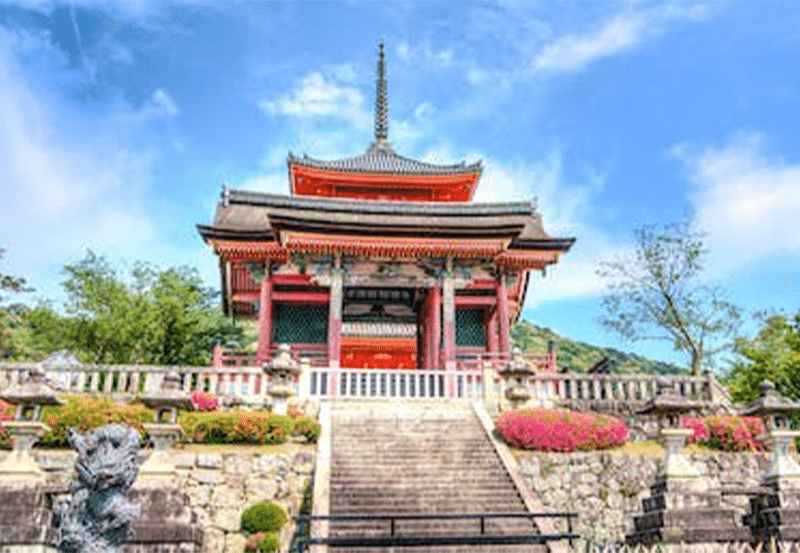
Shinto is the indigenous religion of Japan, and its history spans thousands of years.
“Here's a brief overview”
Origins:
The origins of Shinto can be traced back to prehistoric times when ancient Japanese communities worshipped and revered natural phenomena, such as mountains, rivers, and trees. These practices formed the basis of what would later develop into Shinto.
Ancient Period:
Shinto beliefs and practices started to take shape during the Funk period (250-538 CE) and Asoka period (538-710 CE). The mythology and legends of Japan, known as the Jiko and Ni-hon Shook, were compiled during this time, documenting the divine origins of the imperial family and the kamikaze. Shinto rituals were performed to ensure harmony with nature and appease the kamikaze.
Influence of Buddhism:
In the 6th century CE, Buddhism was introduced to Japan from China and Korea. Buddhism coexisted with Shinto, leading to a symbiotic relationship between the two religions. Shinto adopted certain Buddhist rituals and practices, and Shinto kamikaze was sometimes identified with Buddhist deities.
Shinto as a State Religion:
During the Heisman period (794-1185 CE), Shinto became the state religion of Japan. The imperial court established elaborate rituals and ceremonies, and Shinto shrines were built throughout the country. Shinto and Buddhism continued to influence each other, and syncretism practices developed.
Separation of Buddhism and Shinto:
In the Meiji period (1868-1912), Japan underwent a period of rapid modernization and Westernization. As part of the Meiji government’s efforts to establish a unified national identity, Shinto was separated from Buddhism in a movement known as Shiatsu Bunin. Shinto was redefined as a distinct religious tradition focused on worshipping kamikaze and promoting emperor-centered nationalism.
Post-World War II:

The Allied occupation influenced the religious landscape after Japan’s defeat in World War II. Shinto was disestablished as the state religion, and a clear separation between Shinto and the government was enforced. Shinto shrines became independent religious institutions, and religious freedom was guaranteed in the post-war constitution.
Influence of Colonialism on Cultism and Rituals:
The influence of colonialism on cults and rituals in various regions can be observed through the interaction and exchange between indigenous cultures and the colonizing powers. Here is a brief history of the impact of colonialism on cults and rituals:
Cultural Encounter:
When colonial powers expanded their territories, they often encountered indigenous cultures with their own established religious beliefs, cults, and rituals. These encounters resulted in cultural interactions, syncretism, and sometimes conflict.
Suppression and Conversion:
In some cases, colonial powers sought to suppress indigenous religious practices and impose their religious beliefs. Missionaries and colonial administrators often targeted indigenous cults and rituals, viewing them as superstitious or idolatrous. These efforts aimed to convert indigenous populations to the dominant religion of the colonizers, such as Christianity or Islam.
Syncretism and Adaptation:
Despite attempts at suppression, indigenous cults and rituals often underwent syncretism, adaptation, and survival processes. Indigenous communities sometimes incorporated elements of the colonizers’ religious practices into their belief systems, creating hybrid or syncretist religious movements. It allowed preserving certain rituals and practices while blending them with new influences.
Cultural Resistance:
Some indigenous communities engaged in cultural resistance in response to the imposition of foreign religions and suppression of indigenous practices. They actively preserved and maintained their cults and rituals, often in secret or underground settings, to protect their traditions and resist colonial influence.
Cultural Revival:
In the post-colonial era, there has been a resurgence of interest in indigenous cultures and a revival of traditional cults and rituals. Many communities have sought to reclaim and revitalize their cultural heritage to assert their identity and challenge the legacies of colonialism.
It’s important to note that the impact of colonialism on cults and rituals varied greatly across different regions and communities. The specific dynamics and outcomes were influenced by factors such as the duration and intensity of colonial rule, the religious and cultural diversity of the colonized societies, and the resilience and adaptability of indigenous traditions.
Modern Cults and New Religious Movements:
The influence of colonialism on cults and rituals in various regions can be observed through the interaction and exchange between indigenous cultures and the colonizing powers. Here is a brief history of the impact of colonialism on cults and rituals:
Cultural Encounter:
When colonial powers expanded their territories, they often encountered indigenous cultures with their own established religious beliefs, cults, and rituals. These encounters resulted in cultural interactions, syncretism, and sometimes conflict.
Suppression and Conversion:
In some cases, colonial powers sought to suppress indigenous religious practices and impose their own religious beliefs. Missionaries and colonial administrators often targeted indigenous cults and rituals, viewing them as superstitious or idolatrous. These efforts aimed to convert indigenous populations to the dominant religion of the colonizers, such as Christianity or Islam.
Syncretism and Adaptation:
Despite attempts at suppression, indigenous cults and rituals often underwent syncretism, adaptation, and survival processes. Indigenous communities sometimes incorporated elements of the colonizers’ religious practices into their belief systems, creating hybrid or syncretist religious movements. It allowed preserving certain rituals and practices while blending them with new influences.
Cultural Resistance:
Some indigenous communities engaged in cultural resistance in response to the imposition of foreign religions and suppression of indigenous practices. They actively preserved and maintained their cults and rituals, often in secret or underground settings, to protect their traditions and resist colonial influence.
Cultural Revival:
In the post-colonial era, there has been a resurgence of interest in indigenous cultures and a revival of traditional cults and rituals. Many communities have sought to reclaim and revitalize their cultural heritage to assert their identity and challenge the legacies of colonialism.
It’s important to note that the impact of colonialism on cults and rituals varied greatly across different regions and communities. The specific dynamics and outcomes were influenced by factors such as the duration and intensity of colonial rule, the religious and cultural diversity of the colonized societies, and the resilience and adaptability of indigenous traditions.
Controversies, Challenges, and Societal Impact:
Controversies, challenges, and societal Impacts associated with cults and new religious movements (NR-Ms) can vary greatly depending on the specific group and its practices. Here are some common aspects worth discussing:
Controversies and Negative Perceptions:
Manipulation and Control:
Cults and some NRMs have been accused of using manipulative techniques to control their followers. This may involve psychological manipulation, isolation from friends and family, strict obedience to leaders, and the erosion of individual autonomy.
Financial Exploitation:
Some cults have been involved in financial exploitation, coercing members into making significant financial contributions or engaging in fraudulent practices such as pyramid schemes.
Abuse and Violence:
Certain cults have been linked to physical, emotional, and sexual abuse. In extreme cases, this has resulted in tragic events, such as mass suicides or violent confrontations with authorities or society.
Legal Issues:
Cults and NRMs may face legal challenges related to fraud, tax evasion, child abuse, or human rights violations.
Societal Impact:
a. Public Perception: High-profile controversies associated with cults and NR-Ms have led to negative public perception and stigmatization of these groups. This can result in fear, prejudice, and misinformation about all NR-Ms, even those that do not engage in harmful practices.
Family and Social Disruption:
Individuals’ involvement in cults or NR-Ms can sometimes strain relationships with family and friends who may be concerned about their well-being. This can lead to social isolation and emotional distress for individuals and their loved ones.
Legal and Regulatory Responses:
Governments and legal systems have responded to cult-related issues by enacting laws and regulations to protect individuals and address illegal or harmful activities. However, balancing the need for religious freedom and individual rights with protecting vulnerable individuals remains a complex challenge.
Response and Support:
Education and Awareness:
Promoting education and awareness about cults and NRMs can help individuals and communities recognize warning signs, understand manipulation techniques, and make informed decisions about their involvement.
Support Networks:
Support groups, counselling services, and exit counselling programs exist to assist individuals who wish to leave or have left cults and NR-Ms. These resources offer emotional Support, guidance, and information to help individuals rebuild their lives.
Analysis :
Scholars, researchers, and experts study cults and NR-Ms to understand their dynamics, motivations, and Social Impact. This knowledge contributes to a better understanding of these groups and aids in developing effective strategies for prevention and intervention.
It’s important to note that not all cults or NRMs engage in harmful or controversial practices. Some groups provide positive Support and spiritual guidance or promote personal development. However, the controversies and challenges associated with certain groups have had a significant societal impact and underscore the importance of critical thinking, education, and Support for individuals affected by such movements.
Cultural Evolution and Transformation:

Cultural evolution and transformation refer to how cultures change, adapt, and develop over time. It involves transmitting, modifying, and innovating cultural practices, beliefs, values, norms, and traditions within or across different societies.
Here's a brief explanation of cultural evolution and transformation:
Transmission of Culture:
Cultural evolution begins with transmitting cultural knowledge and practices from generation to generation. This transmission can occur through various means, such as oral traditions, written texts, artistic expressions, rituals, education systems, and media.
Cultural Change:
Cultures are not static; they constantly change in response to internal and external factors. Internal factors include social, economic, and technological developments, while external factors can include interactions with other cultures, globalization, migration, and historical events.
Innovation and Cultural Adaptation:
Cultural evolution often involves the emergence of new ideas, inventions, and practices within society. Innovation is crucial in cultural transformation as societies adapt to changing circumstances and needs. New technologies, scientific discoveries, social movements, and intellectual breakthroughs can significantly shift cultural practices and beliefs.
Cultural Diffusion:
Cultures interact and influence one another through processes of cultural diffusion. This occurs when ideas, practices, or cultural elements spread from one society or group to another. Diffusion can happen through trade, migration, conquest, colonialism, media, and globalization. It can result in adopting, adapting, or rejecting foreign cultural elements.
Cultural Syncretism:
When different cultures come into contact, syncretism may occur, leading to the blending or merging of cultural practices and beliefs. This process often produces hybrid or syncretist forms of culture that incorporate elements from multiple sources. Syncretism can result in the emergence of new religious movements, artistic styles, languages, or culinary traditions.
Cultural Revival and Preservation:
Despite cultural evolution and transformation, societies often seek to revive, preserve, or reclaim aspects of their cultural heritage. This can occur through cultural revitalization movements, the preservation of traditional practices, heritage conservation, and the recognition of intangible cultural heritage.
Overall, cultural evolution and transformation are ongoing processes that shape the dynamics of societies. They reflect the adaptability and resilience of cultures as they respond to internal and external changes while also showcasing the diversity and interconnections of human societies throughout history.
Syncretism and Fusion of Beliefs in Asian Cults:
Syncretism and the fusion of beliefs are prevalent in many Asian cults and religious movements. Here’s a brief history explaining this phenomenon:

Ancient Times:
In ancient Asia, diverse religious and philosophical traditions coexisted and interacted. It led to syncretism practices, where different religious ideas and rituals merged. For example, in India, blending Vedic traditions with local folk practices led to the development of Hinduism. Similarly, the amalgamation of Confucianism, Taoism, and Buddhism in China gave rise to a syncretist tradition known as Chinese folk religion.
Cultural Exchange:
Asia has been a hub of cultural exchange and trade routes for centuries. It facilitated the spread of religious ideas and practices across different regions. As different religious traditions encountered one another, syncretism often occurred. For instance, Buddhism, originating in India, underwent significant adaptations as it spread to countries like China, Japan, and Tibet, incorporating local beliefs and rituals.
Influence of Imperial Powers:
The expansion of imperial powers in Asia, such as the Mongols and the Mughals in India, or the spread of Chinese cultural influence, played a role in the syncretism of religious beliefs. These empires often facilitated the integration of diverse religious practices under a common framework, allowing for the coexistence and fusion of different traditions.
Folk Religions and Shamanism:
Many Asian cults and religious movements have their roots in indigenous folk religions and shamanic practices. These traditions often exhibit syncretism elements, incorporating local beliefs, ancestor worship, nature spirits, and shamanic rituals. Shamanic practices, in particular, involve the mediation between the human and spirit realms, blending elements of animism, divination, and healing.
Colonial and Modern Era:
The colonial period in Asia brought further religious and cultural interactions. Western missionaries introduced Christianity to various Asian countries, leading to the syncretism of Christian beliefs with indigenous practices. Additionally, the impact of globalization and the modern era has resulted in new religious movements that synthesize elements from different religious traditions, seeking to provide alternative spiritual paths in a changing world.
Overall, the history of syncretism and the fusion of beliefs in Asian cults highlight the region’s fluidity and adaptability of religious traditions. Blending diverse religious ideas, rituals, and practices has given rise to unique syncretism forms of spirituality, offering followers a sense of continuity with their cultural heritage while incorporating new influences.
Shifts in Ritualistic Practices over Time:
Shifts in ritualistic practices over time refer to changes in how rituals are performed, understood, and valued within a cultural or religious context. Here’s a brief explanation of the key factors and examples of shifts in ritualistic practices:
Social and Cultural Changes:
Rituals are deeply intertwined with a society’s social and cultural fabric. Rituals often adapt as societies evolve and undergo social, economic, and technological transformations.
Example: In modern Western societies, traditional wedding ceremonies have seen shifts in format and content. Couples may opt for more personalized and non-religious ceremonies, incorporating unique elements that reflect their individuality.
Religious Reinterpretation:
Within religious traditions, the interpretation of rituals can evolve as new religious leaders emerge, doctrines are reinterpreted, or theological perspectives shift.
Example: In Christianity, the mode and significance of baptism have varied across different historical periods and denominations. Some Christian traditions have shifted from full immersion baptism to pouring or sprinkling water, reflecting changing theological understandings.
Secularization and Ritual Transformation:
Secularization processes can lead to changes in traditional religious rituals or the emergence of new secular rituals. As societies become more secular, rituals may have different meanings or be repurposed for non-religious contexts.
Example: The celebration of Christmas has transformed over time, shifting from its religious origins to a more secular and commercialized holiday focusing on gift-giving and family gatherings.
Globalization and Cultural Exchange:
Increased global connectivity and cultural exchange can influence ritualistic practices by introducing new ideas, symbols, and practices from different cultures. It can lead to the blending or integration of diverse ritual elements.
Example: Yoga, originally rooted in Hindu philosophy and ceremonial practices, has been adopted and transformed in various cultural contexts worldwide, incorporating elements from different spiritual traditions.
Revival and Preservation Efforts:
In response to cultural loss or the desire to reclaim traditional practices, there may be movements to revive or preserve ceremonial practices that have diminished or been suppressed over time.
Example: The revitalization of indigenous ceremonies and rituals among Native American communities in the United States reflects efforts to reclaim cultural heritage and reinforce cultural identity.
These are just a few examples of how shifts in ritualistic practices occur. The nature and extent of these shifts can vary across different societies, religious traditions, and historical periods. The changes may reflect broader social, cultural, and religious dynamics and the individual and collective needs of the communities involved.
Role of Cultism and Rituals in Contemporary Asia:
In contemporary Asia, cultism and rituals play significant roles in society. Here’s a brief explanation of their roles:
Cultism:
Spiritual and Emotional Fulfillment: Cults often attract individuals seeking spiritual or emotional fulfillment outside traditional religious institutions. These groups may offer a sense of belonging, purpose, and personal transformation through their unique teachings, practices, and charismatic leaders.
Alternative Belief Systems:
Cults sometimes emerge as alternatives to mainstream religions or responses to societal changes and challenges. They may provide alternative interpretations of religious or philosophical concepts, offering individuals a different perspective on spirituality and life.
Controversies and Risks:
It’s important to note that certain cults can be controversial and potentially harmful. Some may engage in manipulative tactics, isolation from society, or the exploitation of their followers. Such cults can risk individuals’ well-being, relationships, and lives.
Rituals:
Religious Practices:
Rituals continue to be an integral part of religious traditions in Asia. They serve as ways to express devotion, communicate with the divine, and maintain a connection with cultural heritage. Rituals often involve prayers, offerings, ceremonies, and symbolic actions that reflect the beliefs and values of specific religious communities.
Cultural Identity and Festivals:
Rituals also play a crucial role in maintaining and expressing cultural identity. Traditional festivals and ceremonies celebrate cultural heritage and serve as important social and communal events. These rituals provide a sense of continuity, unity, and shared values among community members.
Healing and Well-being:
Rituals are often associated with healing and well-being at the individual and collective levels. Meditation, chanting, and purification rituals promote physical, mental, and spiritual health. Rituals may also be performed to address specific social or environmental concerns.
Adaptation and Innovation:
Contemporary Expressions:
In response to societal changes and globalization, rituals in Asia have also undergone adaptations and innovations. Traditional practices may be modified to accommodate modern contexts, incorporate new elements, or respond to the needs of a changing society.
New Religious Movements:
The emergence of new religious movements and spiritual practices in Asia has introduced novel rituals that cater to the needs and interests of contemporary individuals. These movements often offer alternative spiritual paths, personal growth techniques, or syncretism approaches that fuse elements from various religious traditions.
Overall, cultism and rituals continue to shape contemporary Asia’s religious, cultural, and social landscape. While rituals maintain cultural identity, religious devotion, and social cohesion, cults offer alternative spiritual experiences and belief systems. Still, caution should be exercised to avoid involvement in potentially harmful or manipulative groups.
Cultural Significance and Legacy:
Cultural significance and legacy refer to culture’s enduring impact and value on society, history, and future generations. Here’s a brief explanation of the history and significance of cultural legacy in Asia:

Historical Legacy:
Asia has a rich history and cultural heritage that spans thousands of years. From ancient civilizations such as the Indus Valley and Chinese dynasties to the rise and spread of Buddhism and Islam, Asia has significantly shaped human history and civilization. The cultural legacy of Asia can be seen in various aspects of society, from art, architecture, literature, music, and philosophy to science, technology, and social organization. Many Asian cultural practices and traditions have influenced and inspired other cultures worldwide.
Cultural Diversity:
Asia is also known for its cultural diversity, with numerous ethnic groups, languages, and religions coexisting and interacting. This diversity has led to a vibrant and dynamic cultural landscape with unique regional traditions and practices.
The cultural significance of Asia lies in its ability to blend and synthesize different cultural elements, creating hybrid cultural expressions that reflect the region’s complex history and identity.
Contemporary Impact:
Today, Asia continues to be a major cultural force, with its cultural legacy extending beyond the region to the global stage. Asian films, music, food, and fashion have gained worldwide popularity and influence. The cultural significance of Asia can also be seen in its impact on contemporary issues, such as globalization, urbanization, and environmental challenges. Asia’s cultural practices and traditions offer valuable insights and solutions to these issues, reflecting the region’s unique perspective and wisdom.
In summary, Asia’s cultural significance and legacy are rooted in its rich history, cultural diversity, and contemporary impact. Asia’s enduring cultural legacy provides inspiration, identity, and innovation for future generations.
Societal and Psychological Functions of Cults and Rituals:
Cultural significance and legacy refer to culture’s enduring impact and value on society, history, and future generations. Here’s a brief explanation of the history and significance of cultural legacy in Asia:
Historical Legacy:
Asia has a rich history and cultural heritage that spans thousands of years. From ancient civilizations such as the Indus Valley and Chinese dynasties to the rise and spread of Buddhism and Islam, Asia has significantly shaped human history and civilization. The cultural legacy of Asia can be seen in various aspects of society, from art, architecture, literature, music, and philosophy to science, technology, and social organization. Many Asian cultural practices and traditions have influenced and inspired other cultures worldwide.
Cultural Diversity:
Asia is also known for its cultural diversity, with numerous ethnic groups, languages, and religions coexisting and interacting. This diversity has led to a vibrant and dynamic cultural landscape with unique regional traditions and practices.
The cultural significance of Asia lies in its ability to blend and synthesize different cultural elements, creating hybrid cultural expressions that reflect the region’s complex history and identity.
Contemporary Impact:
Today, Asia continues to be a major cultural force, with its cultural legacy extending beyond the region to the global stage. Asian films, music, food, and fashion have gained worldwide popularity and influence. The cultural significance of Asia can also be seen in its impact on contemporary issues, such as globalization, urbanization, and environmental challenges. Asia’s cultural practices and traditions offer valuable insights and solutions to these issues, reflecting the region’s unique perspective and wisdom.
In summary, Asia’s cultural significance and legacy are rooted in its rich history, cultural diversity, and contemporary impact. Asia’s enduring cultural legacy provides inspiration, identity, and innovation for future generations.
Preservation and Revival of Traditional Practices:
Preservation and revival of traditional practices refer to efforts to safeguard and revive traditional cultural practices, such as art, music, dance, and customs, passed down through generations. Here’s a brief explanation of the importance and methods of preserving and reviving traditional practices:
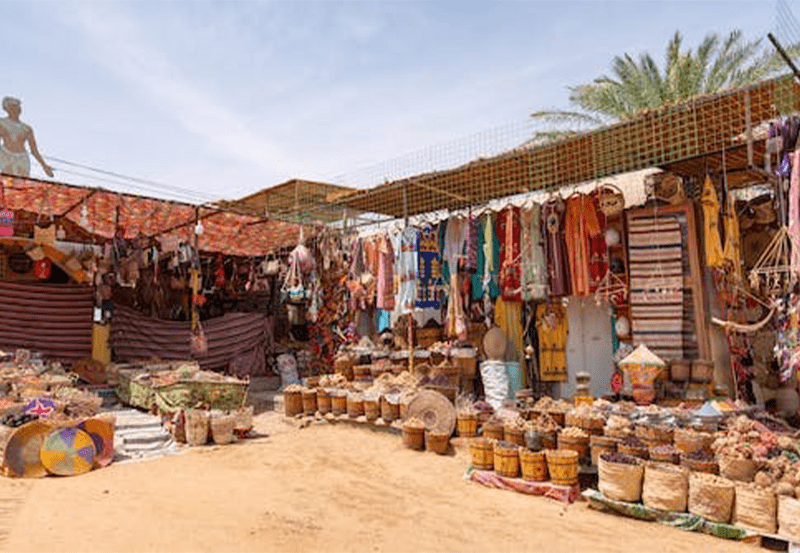
Importance:
Traditional practices are integral to a culture’s identity and history, reflecting its values, beliefs, and worldview. They provide a sense of continuity, connection to the past and a sense of belonging, and community. Traditional practices also offer a valuable source of inspiration and creativity, influencing contemporary art, music, and literature. They can also contribute to sustainable development and environmental conservation by promoting local knowledge and practices.
Methods:
Preserving and reviving traditional practices involve various methods, such as documentation, education, and promotion. Documentation includes recording and archiving traditional practices through oral histories, videos, and photographs to ensure their preservation for future generations. Education involves teaching traditional practices to younger generations through schools, workshops, and mentorship programs. It also involves integrating traditional practices into formal education systems to ensure their relevance and importance.
Promotion involves showcasing and celebrating traditional practices through festivals, exhibitions, and performances. It can raise awareness and appreciation of traditional practices and promote their continued practice and revival.
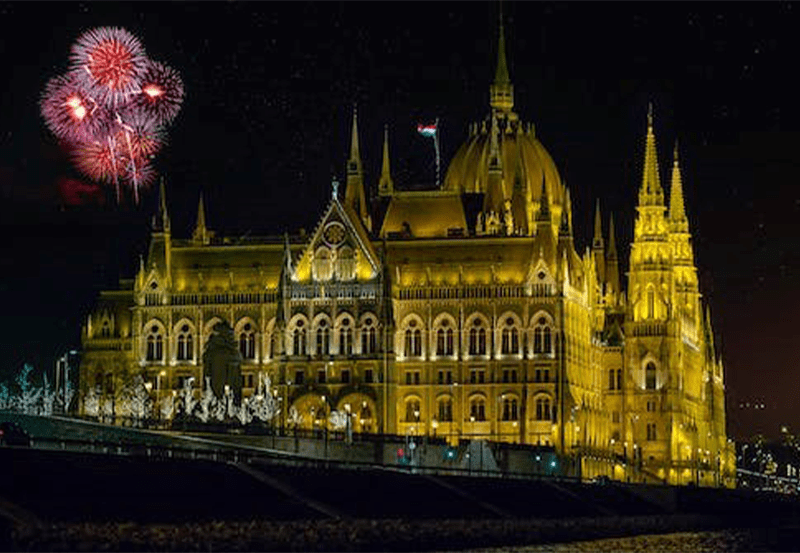
In summary, preserving and reviving traditional practices are important for safeguarding a culture’s identity, promoting creativity and innovation, and contributing to sustainable development. By preserving and reviving traditional practices, societies can ensure the continuation of their cultural heritage for future generations.
Cultural Heritage and the Role of Cultism in Asian Identity:
Cultural heritage plays a vital role in shaping Asian identity; in some cases, cultism has been intertwined with cultural heritage. Here’s a brief explanation:
Cultural Heritage:
Cultural heritage encompasses a culture’s tangible and intangible aspects, including traditions, customs, language, arts, music, architecture, and more. It is a source of pride, and collective memory for communities and nations. In Asia, with its rich and diverse cultural history, cultural heritage is vital in shaping individual and collective identities. It provides a sense of continuity, belonging, and connection to the past, fostering a shared sense of values and traditions among Asian communities.
Role of Cultism:
Cultism, in the context of cultural heritage, refers to developing cult-like practices centred around specific cultural traditions or figures. These practices often involve intense devotion, rituals, and belief systems that revolve around preserving and promoting cultural heritage. Cultism related to cultural heritage can serve as a means to safeguard and revive traditional practices, ensuring their continuation in the face of modernization, globalization, and cultural homogenization.
It can also act as a cultural preservation and transmission platform, as cult-like groups may organize events, festivals, performances, and educational programs to promote and propagate cultural heritage among their followers and the wider community.
Colonialism and Nationalism:
The colonial period profoundly impacted the cultural heritage of Asian societies, as colonial powers often sought to suppress or erase local traditions and replace them with their own.
In response, nationalist movements emerged across Asia, seeking to reclaim and celebrate indigenous cultural heritage to assert national identity and resistance against colonialism. Cultism related to cultural heritage played a role in this process, as nationalist leaders and cultural elites promoted the revival of traditional practices and symbols to unify and mobilize their people.
Religious Syncretism:
In many parts of Asia, religions and belief systems have coexisted and interacted for centuries, resulting in a rich tapestry of syncretism traditions. Cultism related to cultural heritage can be seen in syncretism, religious movements that incorporate elements of multiple faiths or folk practices to create a distinct cultural identity and belief system.
Examples of syncretism movements include the Taoist-Buddhist fusion in China, the Shinto-Buddhist mix in Japan, and the Hindu-Muslim syncretism in India.
Modernization and Globalization:
In the 20th century, rapid modernization and globalization transformed Asian societies, eroding traditional practices and values.
Cultism related to cultural heritage emerged as a response to this trend, with groups forming to preserve and revive endangered traditions.
Some of these groups, however, have been criticized for promoting exclusivity, fundamentalism, or even dangerous practices in the name of cultural heritage.
Contemporary Challenges:
In recent years, the role of cultism in cultural heritage has faced new challenges, such as the rise of social media and the spread of misinformation.
Some groups have used digital platforms to spread false or exaggerated claims about their cultural heritage, leading to conflicts with other communities or damaging the reputation of genuine cultural practices.
At the same time, social media has also provided a platform for diverse voices to share and promote their cultural heritage, fostering a more inclusive and dynamic understanding of Asian identity.
It’s important to note that while cultism related to cultural heritage can be positive in preserving and celebrating traditions, caution must be exercised to ensure it does not become exclusive, exploitative, or detrimental to individuals or society. It is crucial to balance preserving cultural heritage and promoting inclusive and respectful practices that foster understanding and appreciation among diverse communities.
Conclusion:
The history of cultism and human rituals in Asia is a testament to the richness and diversity of the continent’s religious and cultural heritage. From ancient times to the present day, cults and rituals have played a significant role in connecting individuals with the sacred, preserving traditions, fostering social cohesion, and shaping Asian identities.
Ancient Asia witnessed the emergence of indigenous religions with their distinctive rituals, such as the Vedic practices in India and Shinto ceremonies in Japan. The spread of Buddhism and Hinduism across the continent brought new philosophical concepts and ceremonial practices, blending with existing traditions and influencing the development of cultism.
Chinese philosophies like Confucianism and Taoism, along with folk beliefs, left a profound impact on cultist practices in East Asia, emphasizing harmony with nature and spiritual pursuits. These influences shaped various regions’ rituals, ancestor worship, and divination practices.
The colonial era challenged cultism and human rituals, as colonizers often suppressed or replaced local traditions. However, nationalist and cultural revival movements emerged, seeking to reclaim and preserve cultural heritage, reviving traditional rituals and practices.
In the modern era, the revival and preservation of traditional practices continue to be important, with efforts to safeguard cultural heritage through documentation, education, and promotion. The history of cultism and human rituals in Asia highlights their enduring significance in fostering a sense of identity, spirituality, and community among diverse Asian societies.
By understanding this history, we gain insights into the profound cultural significance and legacy of cultism and human rituals in Asia, appreciating their role in shaping individual and collective identities and their contributions to the richness and diversity of Asian cultures.
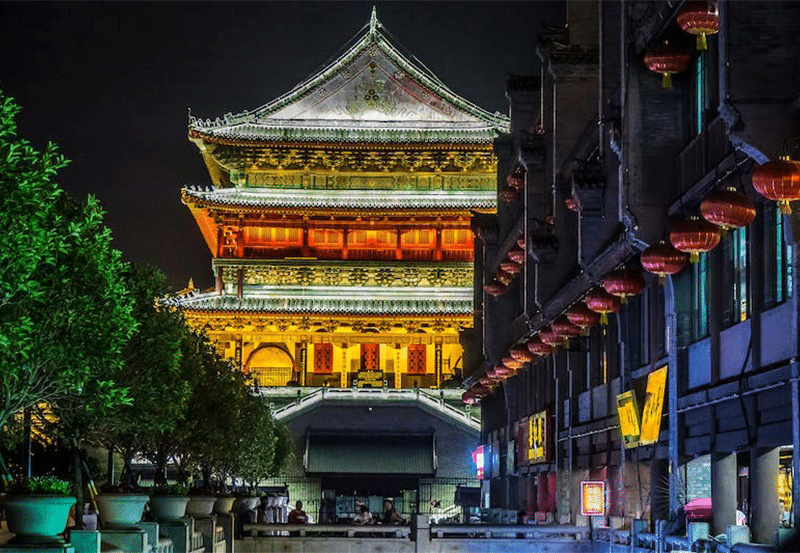
The history of cultism and human rituals in Asia is complex and diverse. Throughout the region’s history, cults and ritualistic practices have emerged and evolved, influenced by various factors such as religion, politics, social dynamics, and cultural exchanges. These practices have often served important societal and psychological functions, providing a sense of belonging, social cohesion, and spiritual fulfillment.
In ancient Asia, cults and rituals were deeply intertwined with indigenous religions and belief systems. They played a crucial role in connecting individuals and communities with the divine, seeking protection, fertility, prosperity, or spiritual enlightenment. Examples include:
The Cults of Shinto in Japan.
Hindu Rituals in India.
The worship of various gods and goddesses across Southeast Asia. The influence of colonialism brought significant changes to the cultist landscape of Asia. Colonial powers often imposed their religious beliefs, resulting in the suppression or marginalization of indigenous practices. However, resistance and revival movements emerged, seeking to preserve and reclaim cultural heritage through cult-like practices. Nationalist movements in the 20th century also utilized cultism to foster a sense of national identity and unity.
In modern times, Asia has seen the emergence of new religious movements and cults, often influenced by global trends and the blending of various spiritual practices. These movements sometimes face controversies and challenges, raising concerns about manipulating followers, financial exploitation, or harmful practices.
Nevertheless, the preservation and revival of traditional practices remain important in Asia. Efforts are made to safeguard cultural heritage through documentation, education, and promotion. By recognizing the cultural significance and legacy of cultism and rituals in Asia, societies can navigate the complex dynamics between tradition and modernity while ensuring exclusivity, respect, and the preservation of diverse cultural identities.
Reflection on the Continuity and Evolution of Cultism and Rituals
The continuity and evolution of cultism and rituals in Asia are fascinating. Over thousands of years, various rituals have been developed, practiced, and evolved in different ways, reflecting the ever-changing sociolect-cultural, economic, and political landscape.
One reflection is that despite the significant changes that have occurred over time, there is a remarkable continuity in the core values and beliefs that underpin these practices. For instance, connecting with the divine, respecting ancestors, and fostering social cohesion through collaborative practices remain fundamental to cultism and rituals in many Asian societies.
For example, in modern times, there has been a resurgence in interest in traditional rituals as people seek to reconnect with their cultural heritage and preserve their cultural identities. It has led to new adaptations and innovations in how these rituals are practiced, with modern technology, for example, being used to document and share these practices with a wider audience.
Another reflection is how external influences have shaped cultism and rituals. From the spread of Buddhism and Hinduism across Asia to the impact of colonialism, these practices have been shaped by diverse cultural and religious influences, leading to the emergence of new syncretism traditions.

Finally, the continuity and evolution of cultism and rituals in Asia remind us of the importance of preserving cultural heritage and promoting cultural diversity. As we reflect on the rich and diverse history of cultism and rituals in Asia, we are reminded of the importance of respecting and preserving cultural traditions that contribute to the richness of the human experience. At that time, we need to promote dialogue and understanding between cultures, recognizing the value of diversity as a source of strength and resilience.
Insights into the Cultural Complexity of Asia:
The continuity and evolution of cultism and rituals in Asia are fascinating. Over thousands of years, various rituals have been developed, practiced, and evolved in different ways, reflecting the ever-changing sociolect-cultural, economic, and political landscape.
One reflection is that despite the significant changes that have occurred over time, there is a remarkable continuity in the core values and beliefs that underpin these practices. For instance, connecting with the divine, respecting ancestors, and fostering social cohesion through collaborative practices remain fundamental.
Cultism and Rituals in Many Asian Societies.
For example, in modern times, there has been a resurgence in interest in traditional rituals as people seek to reconnect with their cultural heritage and preserve their cultural identities. It has led to new adaptations and innovations in how these rituals are practiced, with modern technology, for example, being used to document and share these practices with a wider audience.
Another reflection is how external influences have shaped cultism and rituals. From the spread of Buddhism and Hinduism across Asia to the impact of colonialism, these practices have been shaped by diverse cultural and religious influences, leading to the emergence of new syncretism traditions.
Finally, the continuity and evolution of cultism and rituals in Asia remind us of the importance of preserving cultural heritage and promoting cultural diversity. As we reflect on the rich and diverse history of cultism and rituals in Asia, we are reminded of the importance of respecting and preserving cultural traditions that contribute to the richness of the human experience. At that time, we need to promote dialogue and understanding between cultures, recognizing the value of diversity as a source of strength and resilience.

What is Cultism, and How Does it Differ From Mainstream Religions?
Cultism refers to the practices and beliefs of a small, often secretive, group that deviates from the established norms of mainstream religions. Cults typically have charismatic leaders and distinct rituals or doctrines that set them apart.
What are Some Examples of Cults in Asian history?
Some notable cults in Asian history include the Thug-gee cult in India, Am Shinrikyo in Japan, and Heaven’s Gate in China. These cults gained attention for their controversial beliefs and practices.
How did Cults and Rituals Evolve in Prehistoric and Ancient Asia?
Prehistoric and ancient Asian cultures developed rituals and practices rooted in shamanism and ancestor worship. These rituals were often associated with hunting, agriculture, and fertility, laying the foundation for later religious practices.
What Role did Blood Sacrifices Play in Early Asian Cultures?
Blood sacrifices held significant religious and symbolic meanings in early Asian cultures. They were often seen as offerings to appease deities, seek blessings, or ensure the prosperity and well-being of the community.
How did Mystery Cults and Secret Societies Influence Asian History?
Mystery cults and secret societies emerged in Asia, offering esoteric knowledge, initiation rituals, and a sense of belonging to their members. They often challenged established religious and social orders and shaped cultural, political, and philosophical movements.
How did Colonialism Impact Cultism and Rituals in Asia?
Colonialism brought significant changes to Asian societies, including suppressing or transforming indigenous cults and rituals. Some cults adapted to survive, while others disappeared or evolved in response to external influences.
Are Cults and Rituals Still Present in Modern Asia?
Yes, modern Asia continues to witness the presence of cults and new religious movements. Some cults have embraced new technologies and global platforms, while others have incorporated elements from different religions or developed alternative spiritual practices.
What is the Significance of Cultism and Rituals in Asian Identity and Culture?
Cultism and rituals have been crucial in shaping Asian identity and culture. They provide a sense of belonging, spiritual fulfillment, and cultural continuity, contributing to the richness and diversity of Asian societies.
How do Cults and Rituals Reflect the Complexity of Asian History?
Cults and rituals in Asia reflect the dynamic interplay between religious, social, and cultural forces throughout history. They illustrate the region’s pluralistic nature, cultural exchanges, and the enduring quest for meaning and spiritual experiences.
To access more informative blogs, then click here.




